Cyber Measures Up in Manchester
- 7 minutes read - 1347 wordsPeter Drucker said “What gets measured, gets managed”. When I turned up at Old Trafford, home of Manchester’s red team (it’s a security conference, geddit) for The Future of Cyber, I certainly was measurably impressed by the setting even though I’m usually found more on the blue spectrum of infosec.
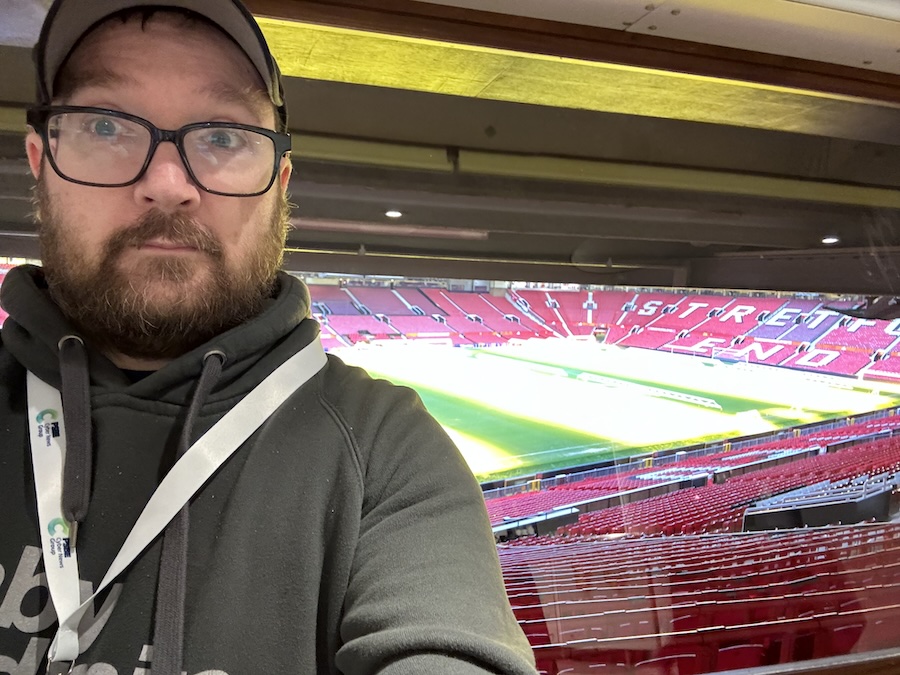
But let’s get into the talks!
Measure, measure, measure
First, Greg Notch talked about the importance of using metrics in communication. A culture of metrics allows us to measure cost and value. I liked the following:
Don’t solve a $5 problem with a $10 solution
It is important to speak a simple language and use the metrics that can then allow us to spot trends.
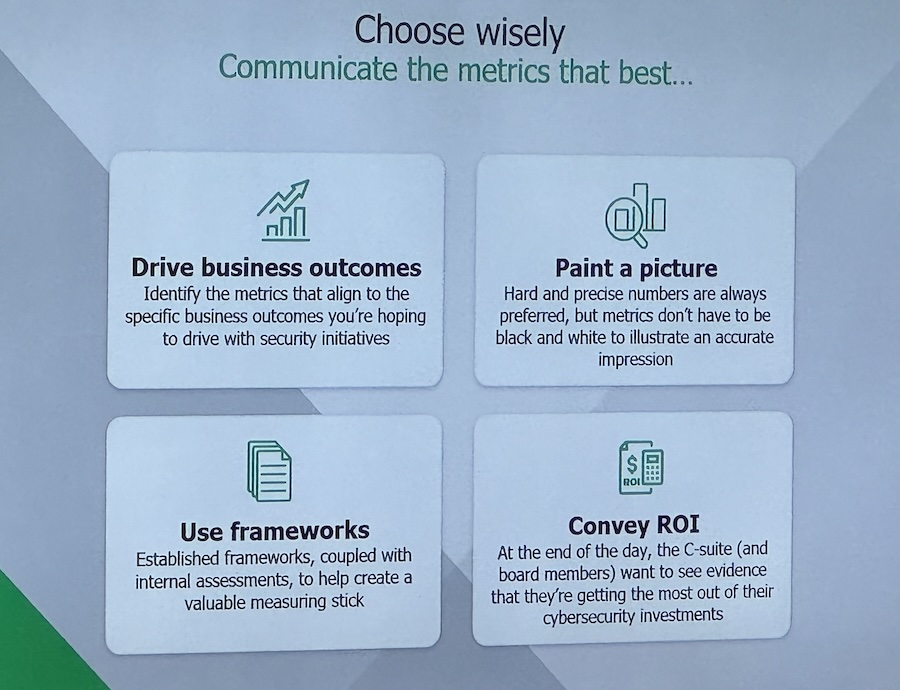
Couldn’t agree more! Measurements also played an important part in Tim Ward’s talk about nudging people to do the right thing rather than scaring them. The basic premise was this:
What’s going to be more effective? Shouting at children to tidy or turning it into a game?
Well, I know that shouting falls on deaf ears for my children. Similarly, I really liked the idea of using nudges instead of painful yearly “secure coding” exercises or sending people on training as punishment for clicking on a phishing simulation email.
I loved how time introduced the concept of choice architecture to made us think about how we can use behavioural theory for better communication:
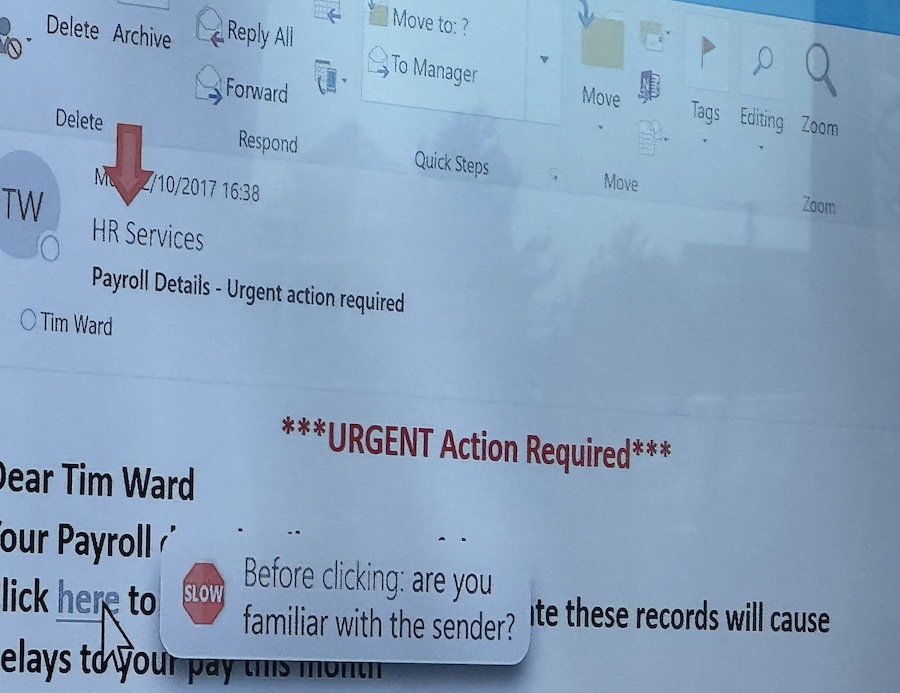
The role of measurement was to ensure that the nudges and prompts make a difference. The biggest risks of prompts is habituation. How many of us get change-blind when faced with the same warning over and over again, regardless of how red and flashing it is. Good prompts should warn us when we’re about to do something that we haven’t done in a while.
I really liked this approach and had a good chat with Tim in the vendor area. I got the impression that we both had been scarred by mandatory training videos that cannot be sped up. Who thinks this is a good idea? But like he said in his talk: “People don’t always make rational decisions”
Let’s Play Football!
Lee Morton then gave us a great demonstration on how to make difficult subjects more accessible. Now, I don’t know the first thing about American Football, but using the medium of infosec analogies, Lee was able to explain “blitzing”, “intercepts” and “pick-6s” in a language that I understand. I think his point was to do the reverse for members of the board, who are not interested in jargon, but easy to understand analogies.
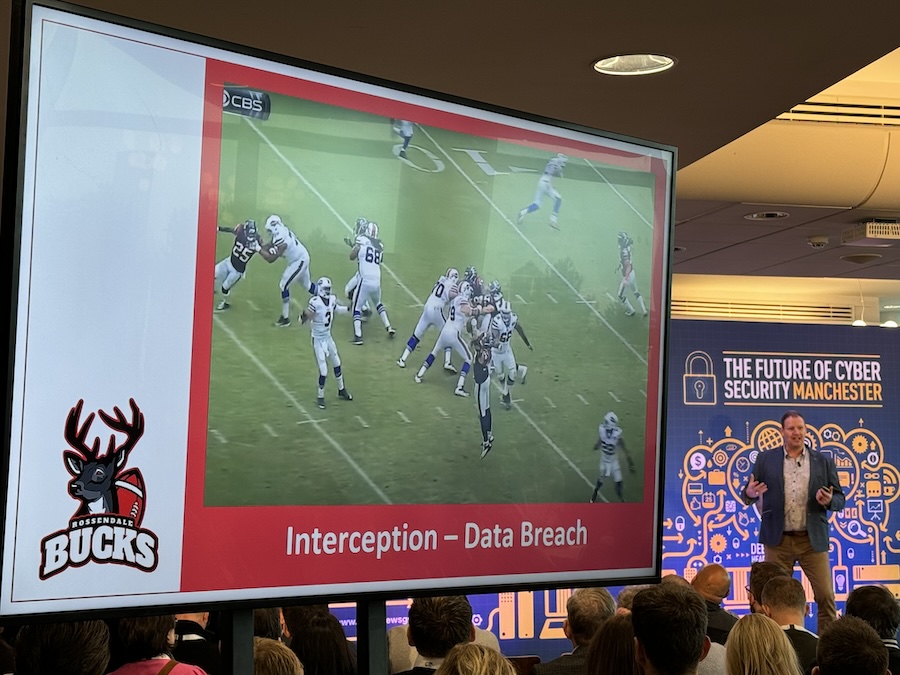
Talking of difficult subjects, Jen Williams’s talk was about that message that everyone dreads:
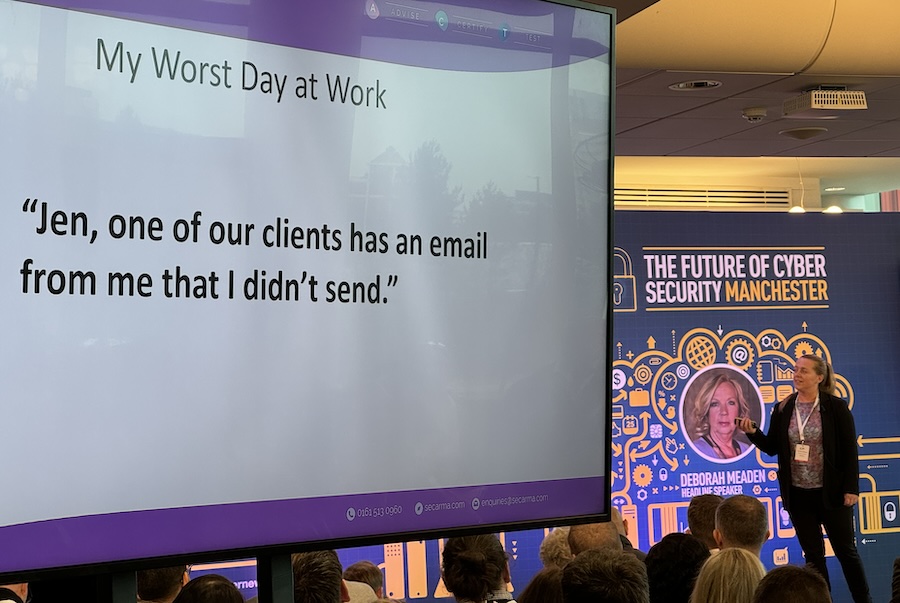
Interestingly, she has observed that the cyber landscape has changed, it is no longer so much about prevention but more about recovery. “Assume breach” is now the default position.
That got me thinking, we’ve got a:
- Business Continuity Plan (how would we work without that systems?)
- Plan to preserve evidence (how do we prove what happened?)
- Recovery Plan (how would we bring that system back online?)
Right? RIGHT?
After I missed a few talks to spend time to have some interesting conversations on the vendor floor (I did love the AI scepticism from people who were working for companies that were pushing AI solution), it was back to talks.
Mean Time To…
I really enjoyed Callum O’Brien’s talk about measuring your SOC. He suggested that we should measure
- Mean Time To Acknowledge (MTTA)
- Mean Time To Investigate (MTTI)
- Mean Time To Resolve (MTTR)
when looking at SOCs. He then proceeded to give some (anonymised) examples:
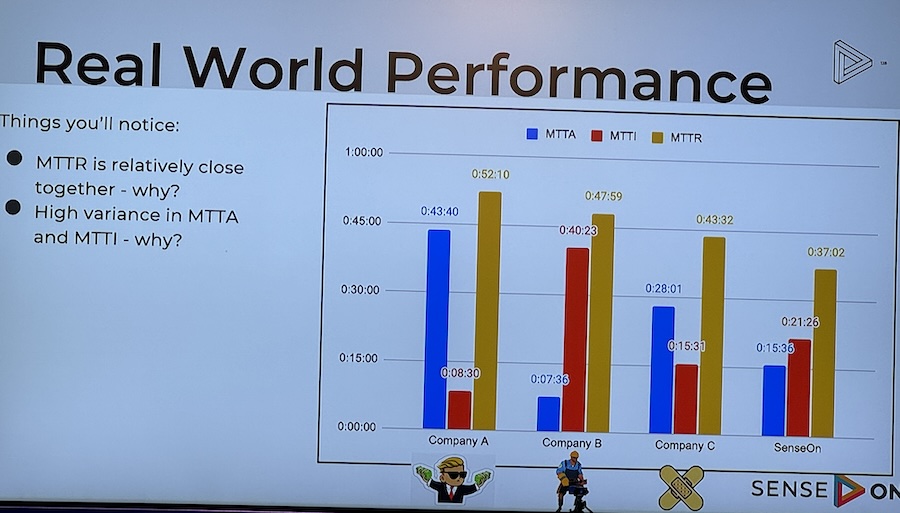
These real world examples also illustrate an interesting pitfall when looking at metrics. In the above image you notice that the MTTR is fairly close together, but there is a big variance in MTTA and MTTI. Why? Callum explained that it is likely all to do with SLAs. Most MSPs will work with a Service Level Agreement of under an hour. Some will be measured against when they first acknowledge an issue, for some the SLA is related to when it is investigated. Just goes to show that targets are often fudged. I did like Callum’s call for everyone to publish their metrics, so that we can learn from each other rather than having to rely on back channels.
How to Hack a Security Conference
Edward Skraba talked to us about threat surfaces and an attacker’s point of view. I especially liked this quote:
You can’t protect what you’re not aware of
And then sat up in my seat as Edward proceeded to show us how we would hack the conference website. It was really interesting what small bits of information can provide an interesting attack surface.
Hacking an infosec conference website:

Privacy!
Good thing Edward repeatedly stressed that no sensitive information was exposed. The next speaker probably wouldn’t have been too impressed. That was Daniel Selman, who is Data Protection Officer for the National Lottery and talked about how he managed to transform a culture of fear of GDPR into an organisation that will happily send him emails about possible data leaks and involve him early enough in conversations. He sees the role of DPIA as enabling rather than coming from a “department of no”. Sounds very agile to me - funnily enough I very much agree with that stance.
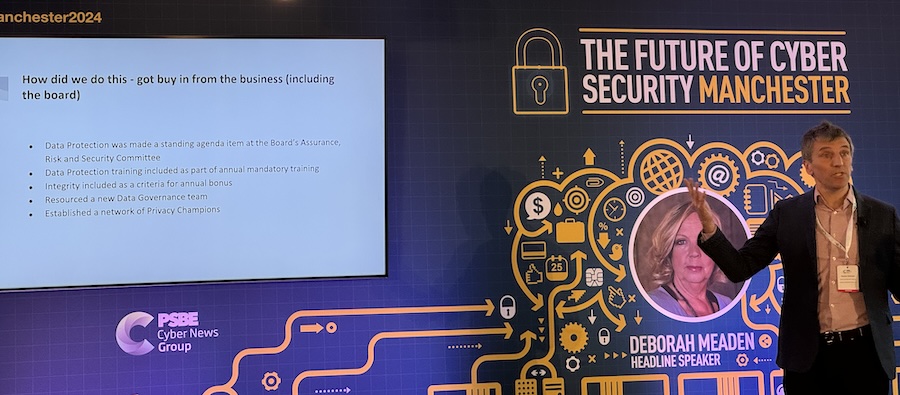
Quote of the Day
Patrick Grillo provided the quote of the day in his talk about the changing nature of security operations.
Silver bullets only work on werewolves, not in security
I also liked the fact that even though Fortinet was betting big on AI, Patrick joked that he was
Contractually obliged to mention AI
but it won’t solve anything on its own. Might help with productivity though.
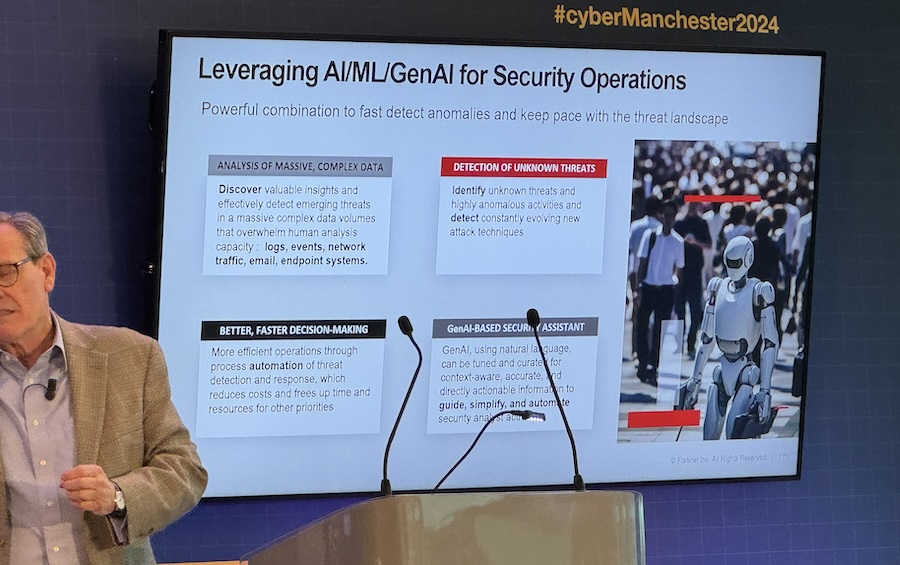
Unbearable Positions
The next talk was by the hosts of the security podcast is Compromising Positions. I really like the premise of interviewing non-infosec people about what they think about security. Lianne Potter and Jeff Watkins talked about “Wearable, Shareable and Unbearable” and was a tour de force about the impact of technology in a world where the number of voice assistance has recently overtaken the number of humans in the world. They posited that the social contract is changing. Whereas previously we surrendered some of our freedoms so that the state can take care of us, now we live in an era of permissive sharing, where we surrender our data in exchange to be able to participate in modern life online. That’s quite something, but it really feasible anymore to opt out of the 24-hour monitoring, constantly sharing locations or even being filmed by others? Chatham House rules probably means 15 minutes of disabling tech. What happens in Vegas definitely doesn’t stay in Vegas anymore.
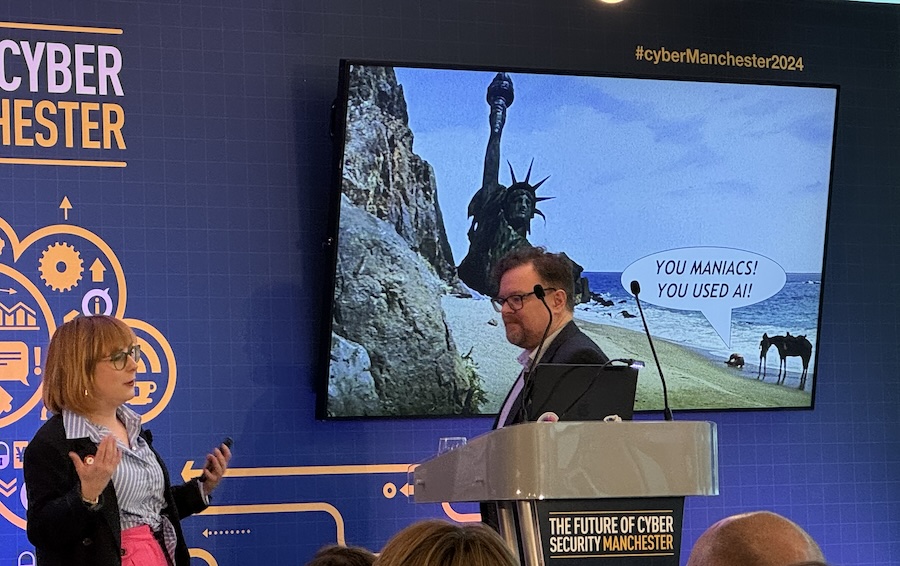
The worrying thing really is that all of this usually happens without informed consent. Who actually reads 154 pages of terms and conditions. And those conditions change. I don’t feel comfortable giving Elon Musk access to my brain with an internet-connected neural chip. Or have a search engine analyse all my habits to push more “relevant” product to me. I am obviously ok with everything Apple does, because the walled garden is brilliant and never wrong!
Personally, the combination of AI generated hallucinations with the ubiquity of data generation and the enshittification of the major tech players, I guess the question (much like with climate change) whether it isn’t already too late.
Conclusion
It’s not all doom and gloom though! It was great to encounter a lot of critical views about AI (accelerated energy waste anyone?), but at the same time enough pragmatism to consider the possible benefits to productivity. The other themes that emerged were metrics, the importance of communication and security as an enabling function. It is really important to measure and validate what we’re doing, not blindly worrying about toothbrushes and to do it without becoming the “department of no”.
Shame I had to say “I’m out” to miss the traffic when Deborah Meaden came on stage! Many thanks to Sarah for organising a brilliant day, even if I got confused by the quantity of keynotes ;-)
Tags appsec security conferenceIf you'd like to find more of my writing, why not follow me on Bluesky or Mastodon?